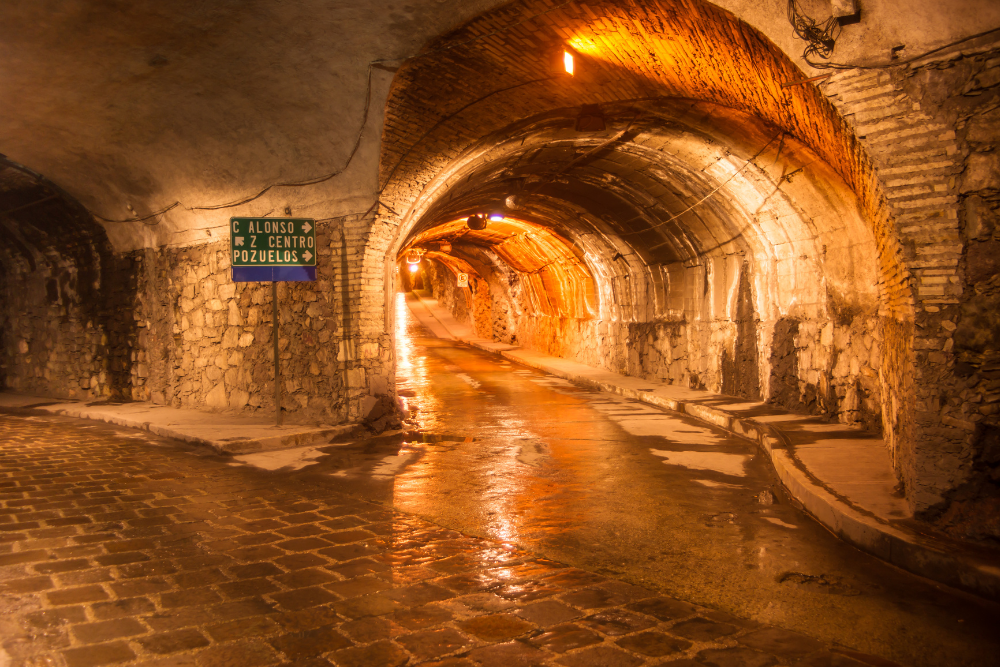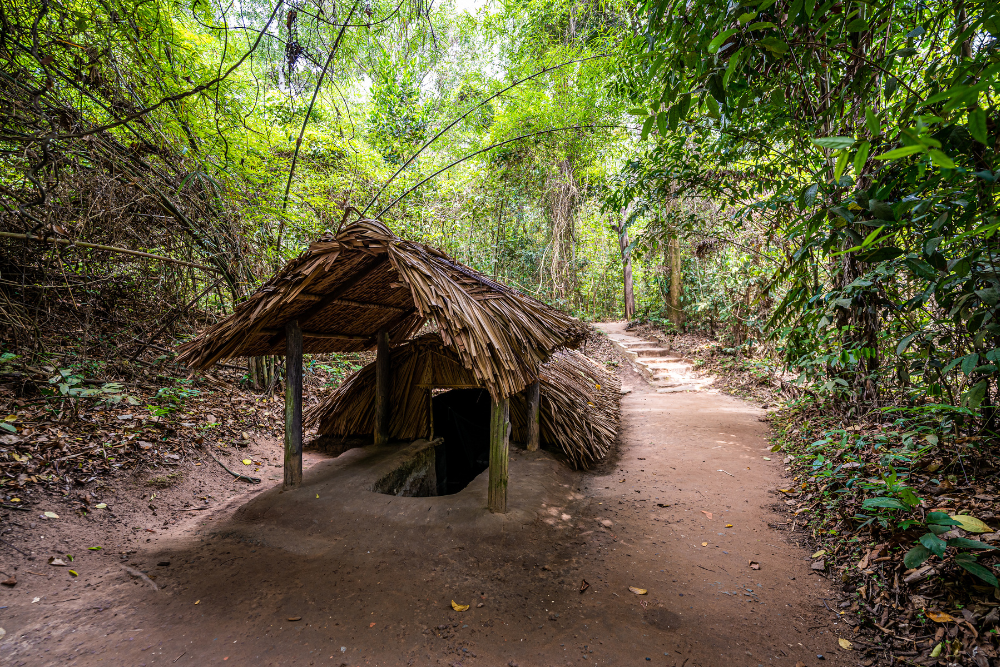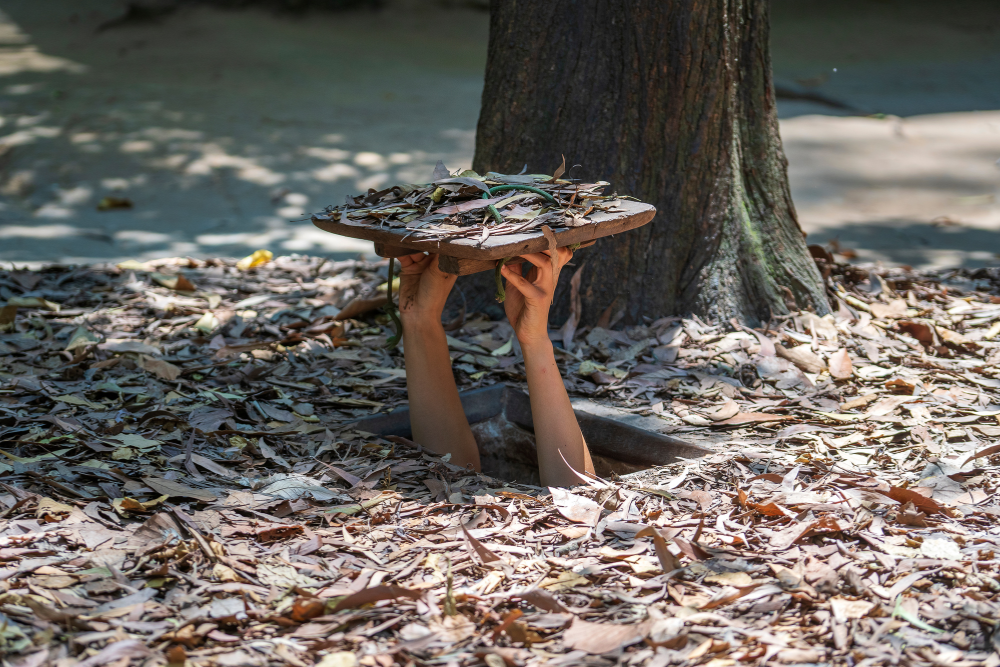The Cu Chi Tunnels, located about 70 kilometers north of Ho Chi Minh City (formerly Saigon), are one of Vietnam’s most important historical and cultural sites. These extensive underground tunnels were used by the Viet Cong during the Vietnam War as hiding spots, supply routes, and living quarters. Today, they attract visitors from all over the world who are keen to learn about the incredible ingenuity and resilience of the Vietnamese people during the war. While many travelers know about the tunnels’ significance, there are still some fascinating facts you might not know. Here are 5 things you didn’t know about the Cu Chi Tunnels.
1. The Tunnels Are Vast and Intricate
Many people are aware that the Cu Chi Tunnels were used during the war, but the sheer size and complexity of the network are truly astounding. The tunnels stretch for more than 250 kilometers beneath the Cu Chi district, making them far more extensive than most visitors realize. The tunnels are not a simple maze, but rather a sophisticated system of passageways, connecting homes, storage areas, kitchens, weapon depots, and hospitals.
What makes the tunnels so remarkable:
- Multiple Levels: The tunnels consist of three main levels. The upper level was used for storage and living quarters, while the middle level housed kitchens, dining areas, and meeting rooms. The lower level provided deeper hiding spots and housed medical facilities and weapons storage.
- Air Ventilation Systems: The tunnels were equipped with air ventilation shafts to ensure that air could circulate despite being deep underground. These ventilation systems were ingeniously designed to be hidden and difficult to detect.
Exploring the tunnels today reveals the sheer engineering skill and resourcefulness of the people who built them.
2. The Tunnels Were Not Just for Hiding
While the Cu Chi Tunnels are best known for their use as hiding places during the Vietnam War, they served a variety of purposes beyond just shelter. These tunnels were integral to the guerrilla warfare tactics employed by the Viet Cong.
Key uses of the Cu Chi Tunnels:
- Living Quarters: The tunnels provided a safe and hidden space where soldiers and civilians could live, sleep, and carry out daily activities without fear of detection by the enemy.
- Weapon and Ammunition Storage: The tunnels housed weapon depots, where arms and ammunition could be stored safely away from the prying eyes of American forces.
- Medical Facilities: There were also underground hospitals, where the Viet Cong treated wounded soldiers. These makeshift medical areas were equipped with basic tools and staffed by local doctors.
- Booby Traps and Secret Entrances: The tunnels also allowed for the strategic placement of booby traps and hidden entranceways. The Viet Cong created elaborate traps using bamboo spikes, and the tunnels offered quick access to launch surprise attacks.
The versatility of the Cu Chi Tunnels was essential for survival, allowing the Viet Cong to remain hidden while maintaining a functioning community and military force.
3. The Tunnels Were Originally Built for Other Purposes
Although the Cu Chi Tunnels are primarily associated with the Vietnam War, they weren’t originally constructed for military purposes. The tunnels’ origins date back to the 1940s during the French colonial period, when they were first dug by local people as a way to avoid French detection and military raids.
The tunnels’ evolution:
- Before the Vietnam War: The first sections of the tunnels were dug by the local population to escape the French colonial forces and protect themselves from bombings, raids, and other forms of oppression.
- Adaptation During the Vietnam War: During the Vietnam War, the tunnels were expanded and adapted to meet the needs of the Viet Cong. They became an essential part of the resistance movement, serving as both a tactical advantage and a means of survival.
This historical context adds another layer to the tunnels’ significance, as they were not just a wartime creation but had deep roots in the struggle for independence.
4. Life Underground Was Extremely Difficult
While the tunnels provided protection and strategic advantages, life inside them was far from easy. The conditions were incredibly harsh, especially considering that the tunnels were narrow, dark, and often filled with moisture.
The challenges of living in the tunnels:
- Extreme Heat and Humidity: The temperature inside the tunnels could reach unbearable levels, especially during the hot months. The constant humidity made it uncomfortable, and the lack of ventilation systems added to the stifling environment.
- Space Limitations: The tunnels were narrow, and some sections were so small that even a person of average size would have to crawl or squeeze through them. The limited space made it difficult to move around and carry out basic activities like eating or sleeping.
- Health and Hygiene: Living underground for extended periods took a toll on the health of those who resided there. The tunnels lacked basic sanitation, and the damp environment contributed to the spread of diseases like dysentery and malaria.
- Risk of Collapse: The tunnels were constantly at risk of collapsing, especially during heavy rainfall or bombing raids. The tunnels’ stability was often compromised, making them dangerous places to inhabit.
Despite these challenges, the tunnels played an indispensable role in the survival of the Viet Cong forces and local villagers during the war.
5. The Tunnels Had Some Surprising Amenities
Despite the extreme conditions, the Cu Chi Tunnels were surprisingly well-equipped to meet the needs of those who lived there. The ingenuity of the tunnel network ensured that the Viet Cong could survive for long periods underground, maintaining essential functions like cooking, communication, and even relaxation.
Some surprising tunnel amenities:
- Kitchens: The tunnels had small, concealed kitchens where food was cooked using traditional methods. The smoke from these kitchens was vented through carefully camouflaged shafts to avoid detection from above.
- Secret Escape Routes: In case of enemy attack or discovery, the tunnels featured hidden escape routes and trapdoors that allowed individuals to exit and move to another part of the network.
- Living Areas: Despite being cramped, the tunnels had sleeping quarters, some of which even featured makeshift furniture like hammocks or wooden platforms. The tunnels were divided into sections, allowing families or soldiers to live in relative comfort.
- Booby Traps: In addition to functioning as living and operational spaces, the tunnels were equipped with traps like bamboo spike pits, punji sticks, and other ingenious devices designed to thwart enemy soldiers attempting to enter.
The level of resourcefulness displayed in creating these amenities is a testament to the survival skills and determination of those who lived in the tunnels.
Conclusion
The Cu Chi Tunnels are not just a series of underground passageways—they are a symbol of ingenuity, resilience, and survival under extreme conditions. While most visitors are aware of their role in the Vietnam War, the tunnels’ rich history, their multifunctional uses, and the harsh realities of life underground make them an even more fascinating site to explore. Whether it’s the sheer scale of the network, the role they played in Vietnam’s struggle for independence, or the incredible creativity required to live in such a challenging environment, the Cu Chi Tunnels offer a unique and immersive glimpse into Vietnam’s past. A visit to the Cu Chi Tunnels is a must for anyone seeking to understand the enduring spirit of the Vietnamese people during one of the most turbulent periods in the country’s history.












